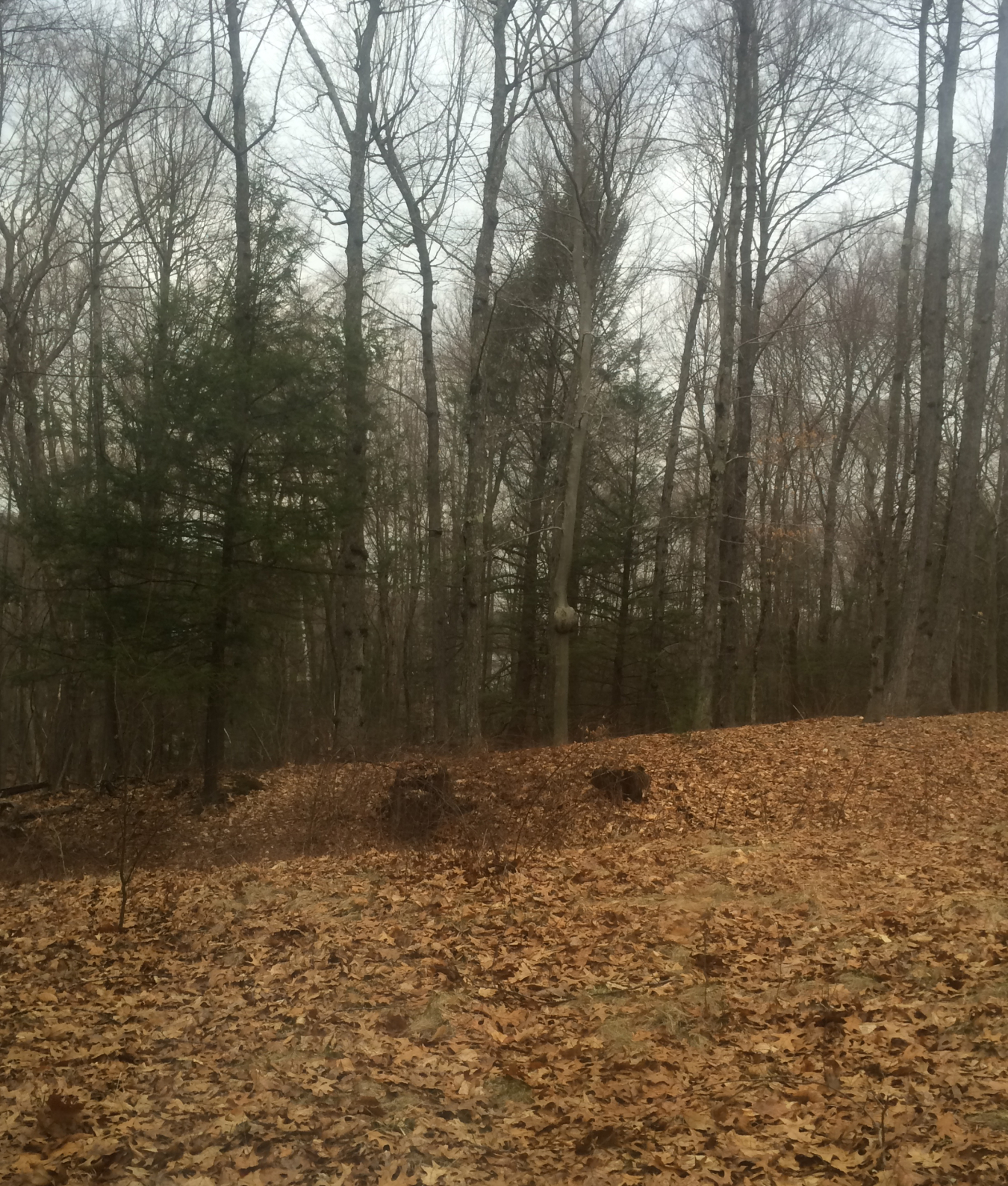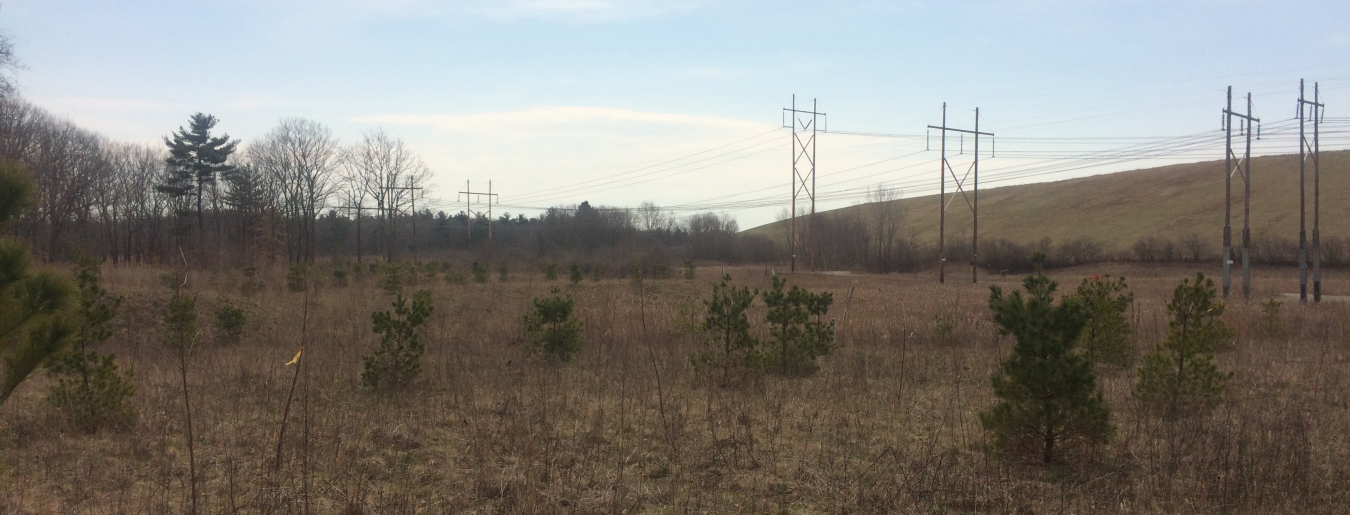LM assumed responsibility for long-term stewardship of two FUSRAP sites from the U.S. Army Corps of Engineers (USACE) in January 2019.
January 30, 2020Introduction
The U.S. Department of Energy (DOE) Office of Legacy Management (LM) assumed responsibility for long-term stewardship of two Formerly Utilized Sites Remedial Action Program (FUSRAP) sites from the U.S. Army Corps of Engineers (USACE) in January 2019. This case study explores what we learned during these transitions and how to improve future transitions from USACE to LM.
Background

One of the FUSRAP portions of the cleaned up Windsor, CT, Site.
FUSRAP was established in 1974 to identify and remediate former Manhattan Project and early
U.S. Atomic Energy Commission (AEC) sites that were contaminated by radioactive material during atomic weapons and early atomic energy development from the early 1940s to the late 1960s. Eligible sites needed to meet the following criteria:
- Work performed on contract to the Manhattan Engineer District or the U.S. Atomic Energy Commission.
- Contamination exceeded current government standards when the site was evaluated.
- Could not be subject to the authority of any other federal program.
Originally a DOE program, FUSRAP was split between DOE and USACE by Congress in 1994.
- LM identifies potential sites, determines whether the site is eligible for cleanup under FUSRAP, and conducts long-term stewardship activities after cleanup is completed.
- USACE investigates and evaluates contamination and, if necessary, cleans up the site.
The two sites that were transitioned were the Attleboro, Massachusetts, Site (formerly the Shpack Landfill Superfund site, located on the border between Norton and Attleboro) and the Windsor, Connecticut, Site (formerly the Combustion Engineering Site, located 8 miles north of Hartford). LM stewardship responsibilities for both sites are limited to managing site records and responding to stakeholder inquiries.
- The Shpack Landfill, which operated from 1946 through the early 1970s, accepted household and industrial waste, including chemical and low-level radioactive waste. FUSRAP-eligible contamination was cleaned up by USACE. The city of Attleboro is responsible for the site’s long-term monitoring and the U.S. Environmental Protection Agency (EPA) is responsible for conducting five-year reviews.
- Portions of the former Combustion Engineering Site were used to research, develop, and manufacture nuclear materials under contract to AEC from 1955 to 1962. From the early 1960s to 2000, other commercial nuclear fuel operations were performed for commercial customers and the U.S. government. The FUSRAP cleanup was conducted by the site owner under U.S. Nuclear Regulatory Commission regulations and supervised by USACE. The final cleanup allows for unlimited use and unrestricted exposure of the property, making it a potential site for future development.
What We Learned
Planning FUSRAP transitions early facilitates a smoother transfer. LM typically begins planning for the transfer of a Category 1 site (or a records-only site) three years prior. This includes a year of pre-transition activities and two years of transition activities.
- Begin transition planning as early as possible.
- Early meetings with USACE, site visits, attending public meetings, and discussing the status of the sites gives us a better understanding of site risks and builds a relationship with USACE.
- Develop a transition schedule for the various activities. Use this tool to manage progress, keep milestones, and clearly define responsibilities.
- We developed schedules for both the Attleboro and Windsor site transitions to highlight activities that were critical to the transitions, as well as to understand key personnel responsible for each action.
- Ensure that both parties clearly understand the schedule milestones and develop an adequate plan for their completion.
- Ensure that someone from the incoming organization reviews and verifies documentation provided to confirm that the information 1) is complete, 2) is what was requested, 3) raises any additional concern, and 4) identifies any additional information needed for transition.
- USACE provided both electronic and hard copy files of the Administrative Records to LM well ahead of the transition. However, it was not until LM was preparing to post the Administrative Record to the LM website, six months after the transition, that a comprehensive review was performed. Delaying the review caused a delay in the final posting of the files for the public.
- Communicate and collaborate effectively. We were successful in communicating with USACE through ongoing Working Group collaborations. These collaborations are a valuable resource during transition planning and completion.
- The Data Management Working Group managed the records transfer process and ensured that files were transferred to LM in accordance with agreed upon processes and procedures.
- Real property checklists that were developed by the Real Property Working Group will assist in asset management going forward.
By using what we learned from the Attleboro and Windsor transitions, we have been able to improve our transition process and better prepare to take over our long-term stewardship responsibilities at new sites as they are turned over to LM.
We followed a similar process to transition LM’s 100th site in September 2019. Another FUSRAP site, the Colonie, New York, Site was also transferred from USACE to LM following cleanup. Since we better understood the process requirements for webpages and fact sheets, we were able to plan and schedule on-time posting. We completed a Real Property Checklist in advance, which allowed us to understand both the real and personal property assets that needed to be considered for this government-owned site. We also followed up on the lessons we learned about documenting post closure agreements by cooperating with USACE in drafting the site management plan for the site. USACE drafted the first version, then allowed LM to complete the document, which allowed both agencies to contribute to the document.
For more information on Office of Legacy Management and the FUSRAP program, please visit our website.

The cleaned up FUSRAP area of the former Shpack Landfill Superfund site. The hill in the background is a local municipal landfill next to the Attleboro, MA, Site.

